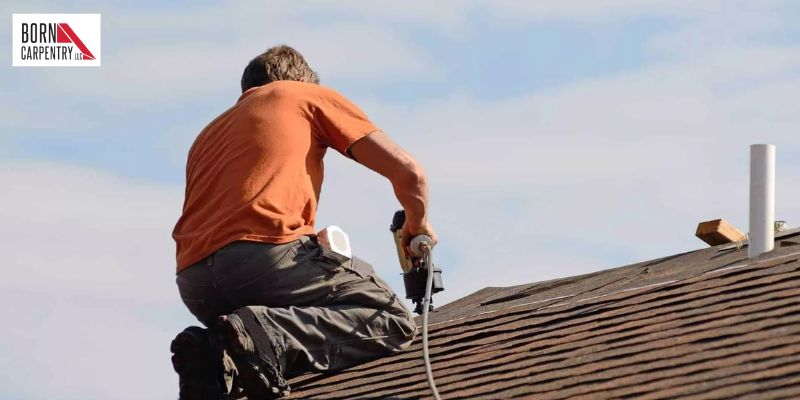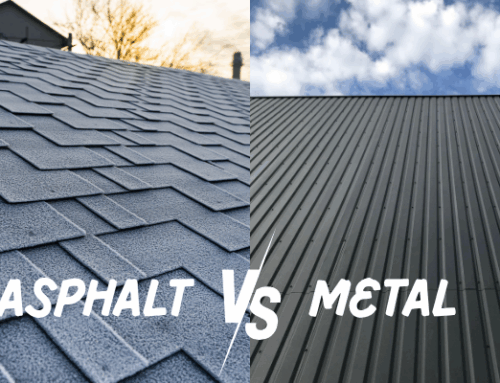Roof damage caused by storms can be a stressful and overwhelming experience for homeowners. The aftermath of a severe storm often leaves properties in disarray, with roofs bearing the brunt of the damage. As a homeowner, it’s crucial to have a comprehensive roadmap for roof repair and restoration to ensure your home is protected and secure.
Here are some necessary steps to address storm damage and restore your roof to its former glory…
#1 Assessing The Damage

After a storm, the first step is to assess the extent of the damage to your roof. It’s essential to prioritize safety and wait until the storm has passed before conducting an inspection. Once it’s safe, carefully examine your roof for any visible signs of damage, such as missing or cracked shingles, dents or holes. Take note of any leaks or water stains on your ceiling as well, as they may indicate roof damage.
#2 Hire A Professional Roofing Contractor

When it comes to repairing or restoring your roof after a storm, it’s highly recommended to hire a professional roofing contractor. A qualified contractor will have the expertise and knowledge to assess the damage accurately and provide the best course of action. Look for contractors with a solid reputation, valid licenses and insurance coverage. Request multiple quotes and compare their services and prices before making a decision.
#3 Temporary Fixes
While waiting for your roofing contractor to arrive, it’s important to take immediate action to prevent further damage. This may include temporary fixes to mitigate any leaks or water intrusion. Use tarps or heavy-duty plastic sheets to cover damaged areas and prevent water from seeping into your home. However, keep in mind that these measures are only temporary and should not replace professional repairs.
#4 Insurance Claims
Before proceeding with any repairs, contact your insurance company to file a claim for the storm damage. Provide them with a detailed description of the damage, including supporting photographs or videos. Insurance companies typically send an adjuster to assess the damage and determine the coverage. Keep records of all communication with your insurance company, including claim numbers and contact information.
#5 Repairing Or Replacing Shingles
High winds can cause shingles to loosen, lift or even tear off completely. Depending on the extent of the damage, your roofing contractor will recommend either repairing or replacing the affected shingles. It’s important to use high-quality materials that match the existing shingles to ensure a seamless repair or replacement.
#6 Addressing Structural Damage
In severe storm cases, roofs may sustain structural damage, compromising their integrity. This includes damage to the underlying support system, such as rafters, trusses or the roof deck. Structural repairs should never be taken lightly, as they directly impact the safety and stability of your home. Consult with a professional roofing contractor who specializes in structural repairs to assess and address any underlying damage properly.
#7 Gutters, Flashing & Ventilation
Storm damage may affect other components of your roofing system, such as gutters, flashing and ventilation. Gutters can become clogged or damaged, preventing proper water drainage. Flashing, which provides a waterproof barrier, may become loose or torn. Additionally, storm winds can impact ventilation systems, affecting airflow in your attic. These issues should be inspected and repaired by your roofing contractor to ensure the overall health of your roof.
#8 Preventive Measures
After completing the necessary repairs and restoration, it’s essential to take preventive measures to safeguard your roof from future storms. Regular roof maintenance, such as clearing debris, trimming nearby trees and inspecting for any signs of wear or damage, can help identify potential issues before they escalate. Additionally, consider reinforcing your roof with impact-resistant materials or implementing a storm-resistant roofing system for enhanced protection.
Summary:
Roof repair and restoration after a storm involves careful planning, professional expertise and timely action. By following this complete roadmap, you can navigate the process with confidence and ensure that your roof is restored to its optimal condition. Remember to prioritize safety, work with reputable contractors and stay proactive in maintaining the health of your roof. With proper care and attention, you can overcome storm damage and provide long-lasting protection for your home.






